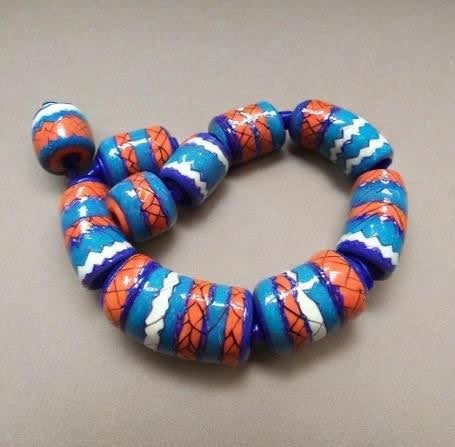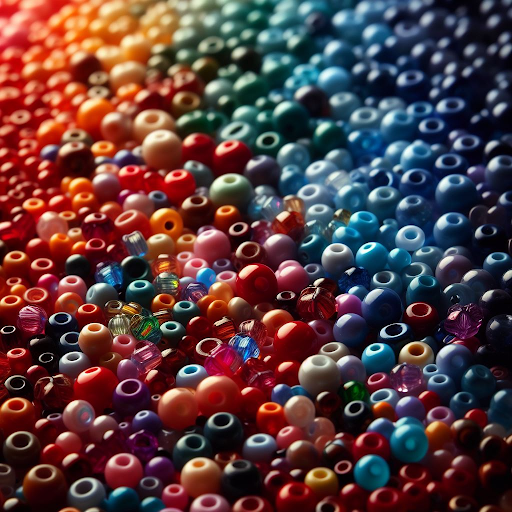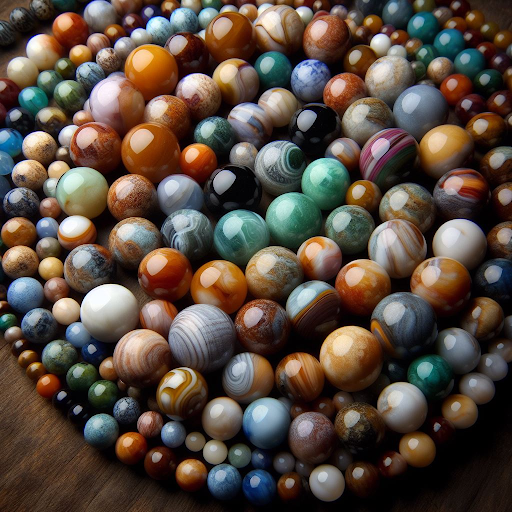Exploring the Artistry of French Beading: A Guide to Timeless Elegance
Introduction

French beading is an exquisite form of bead work that traces its origins to Renaissance Europe. Popularized during the Victorian era, it experienced a revival in modern times, captivating artisans and enthusiasts worldwide. This intricate craft involves stringing tiny glass beads onto wire to create delicate designs, often used in jewelry and decorative accents. Beaded Home Décor adds elegance and charm to any space, reflecting the timeless allure of French beading. From dainty floral motifs to elaborate patterns, French beadwork is cherished for its meticulous craftsmanship and artistic expression. Embark on a journey into the enchanting world of French beading, where creativity knows no bounds.
French Beading Stands as a Cherished Craft for Several Compelling Reasons

- Artistic Legacy: With origins tracing back to Renaissance Europe, French beading has a rich historical significance, embodying centuries of tradition and craftsmanship.
- Meticulous Detailing: This intricate craft involves threading tiny glass beads onto wire with precision, showcasing the artisan’s dedication to perfection.
- Versatility: French beading isn’t limited to traditional jewelry; it extends to various forms of decorative art, including floral arrangements, home decor, and even contemporary creations like Kandi Cuffs.
- Timeless Elegance: Whether adorning a bride’s gown or enhancing the ambiance of a room, French beaded creations exude an unparalleled sense of sophistication and charm.
- Community and Collaboration: Enthusiasts and artisans come together to share techniques, patterns, and inspiration, fostering a vibrant and supportive community.
- Innovation and Adaptation: While rooted in tradition, French beading continues to evolve, with modern silversmith techniques and materials enhancing its appeal for contemporary audiences.
French Beading Evolution

During the Victorian era, French beading underwent a significant evolution and surged in popularity for various reasons:
- Introduction of New Bead Varieties: The Victorian era witnessed the introduction of a diverse range of beads, including chevron beads, pony beads, seed beads, and stone beads, which expanded the possibilities for French bead work.
- Technological Advancements: Innovations in bead manufacturing techniques allowed for the mass production of beads, making them more accessible to artisans and enthusiasts alike.
- Integration into Fashion: French beading became an integral part of Victorian fashion, adorning garments, accessories, and even elaborate home decor items with intricate bead work.
- Symbolism and Status: Beaded adornments symbolized wealth, status, and refinement during this era, with elaborate bead work often reserved for the upper classes.
- DIY Culture: The Victorian era saw the rise of a DIY culture, with women embracing French beading as a fashionable and creative pastime, leading to its widespread popularity among amateur crafters.
Unlocking the Beauty: Exploring Intermediate Bead Weaving Techniques in French Beading


Intermediate bead weaving techniques elevate French beading to new heights, offering artisans the opportunity to create intricate and mesmerizing designs. Here’s a glimpse into some advanced methods that enthusiasts can explore:
Brick Stitch
This technique involves weaving beads in staggered rows, creating a brick-like pattern. It offers versatility in design and is often used to embellish edges or create textured surfaces.
Peyote Stitch
Widely utilized in bead weaving, the peyote stitch involves weaving beads in a staggered, zigzag pattern. It allows for the creation of intricate patterns, including curves and circles, making it ideal for creating floral motifs and geometric designs.
Right Angle Weave (RAW)
RAW involves weaving beads together at right angles, creating a sturdy and flexible structure. This technique is particularly useful for creating three-dimensional forms and embellishments.
Netting Stitch
Netting stitch involves weaving beads into a net-like structure, allowing for the creation of delicate and airy designs. It’s commonly used for creating lacy edges, veils, and intricate overlays.
Circular Brick Stitch
Similar to traditional brick stitch, circular brick stitch involves creating circular patterns by gradually increasing or decreasing the number of beads in each row. It’s perfect for creating floral centers or circular motifs.
Unlocking the Beauty: Exploring Intermediate Bead Weaving Techniques in French Beading



The artistry of French beading lies in the careful selection of beads, each tiny gem contributing to the overall brilliance of the final creation. Whether crafting intricate jewelry pieces or delicate floral arrangements, choosing the right beads is paramount to achieving the desired aesthetic and quality. Here’s a comprehensive guide to help you navigate the vast array of beads available for French beading:
Seed Beads
Seed beads are a staple in French beading, prized for their uniform size and versatility. Available in various sizes, colors, and finishes, they form the foundation of most bead work, offering endless possibilities for intricate designs and patterns.
Pony Beads
Larger than seed beads, pony beads add depth and dimension to French beadwork. Their larger size makes them ideal for creating focal points, embellishments, and statement pieces in jewelry and home decor.
Chevron Beads
Chevron beads feature distinctive V-shaped patterns, adding visual interest and texture to beadwork. Their unique design makes them perfect for creating intricate borders, edgings, and geometric motifs.
Stone Beads
Incorporating natural stone beads adds an element of elegance and sophistication to French bead work. From lustrous pearls to sparkling crystals, stone beads offer a luxurious touch, enhancing the beauty and value of the final piece.
Specialty Beads
Specialty beads, such as bugle beads, faceted beads, and delica beads, provide additional options for adding texture, sparkle, and dimension to beadwork. Experimenting with different shapes, sizes, and finishes can result in truly unique and captivating designs.
Exploring the Diversity: French Beading Designs and Patterns


- Floral Motifs: Among the most popular designs, floral motifs feature delicate blooms and foliage crafted from intricate beadwork. Roses, lilies, and daisies are common choices, with each petal meticulously sculpted for lifelike detail.
- Geometric Patterns: Geometric designs offer a contemporary twist to French beadwork, featuring intricate shapes, angles, and symmetry. From intricate mandalas to bold chevron patterns, geometric designs showcase the precision and versatility of French beading.
- Animals and Insects: French beadwork often includes charming depictions of animals and insects, ranging from whimsical butterflies to majestic peacocks. These designs capture the essence of nature with intricate bead work and lifelike detailing.
- Abstract Art: For those with a modern aesthetic, abstract designs offer endless creative possibilities. Bold shapes, lines, and textures come together to create visually stunning compositions that push the boundaries of traditional French beadwork.
- Seasonal Themes: From delicate snowflakes in winter to vibrant sunflowers in summer, seasonal themes provide endless inspiration for French beadwork designs. These designs capture the essence of each season with color, texture, and charm.
Exploring different French beading designs and patterns allows artisans to unleash their creativity and create truly unique and captivating beadwork. Whether inspired by nature, geometry, or abstract art, there’s a design to suit every style and taste in the vibrant world of French beadwork.
Conclusion

In conclusion, French beading is a timeless craft that continues to captivate artisans and enthusiasts alike with its elegance and versatility. From delicate floral motifs to intricate jewelry pieces, the artistry of French beadwork knows no bounds. Through centuries of evolution and innovation, it has remained a cherished tradition, offering endless opportunities for creativity and self-expression. As we’ve explored the techniques, designs, and beauty of French beading, it’s clear that its allure will endure for generations to come. So, whether you’re a seasoned artisan or a novice crafter, I encourage you to embark on your own French beading journey and let your creativity flourish.

Recent Comments